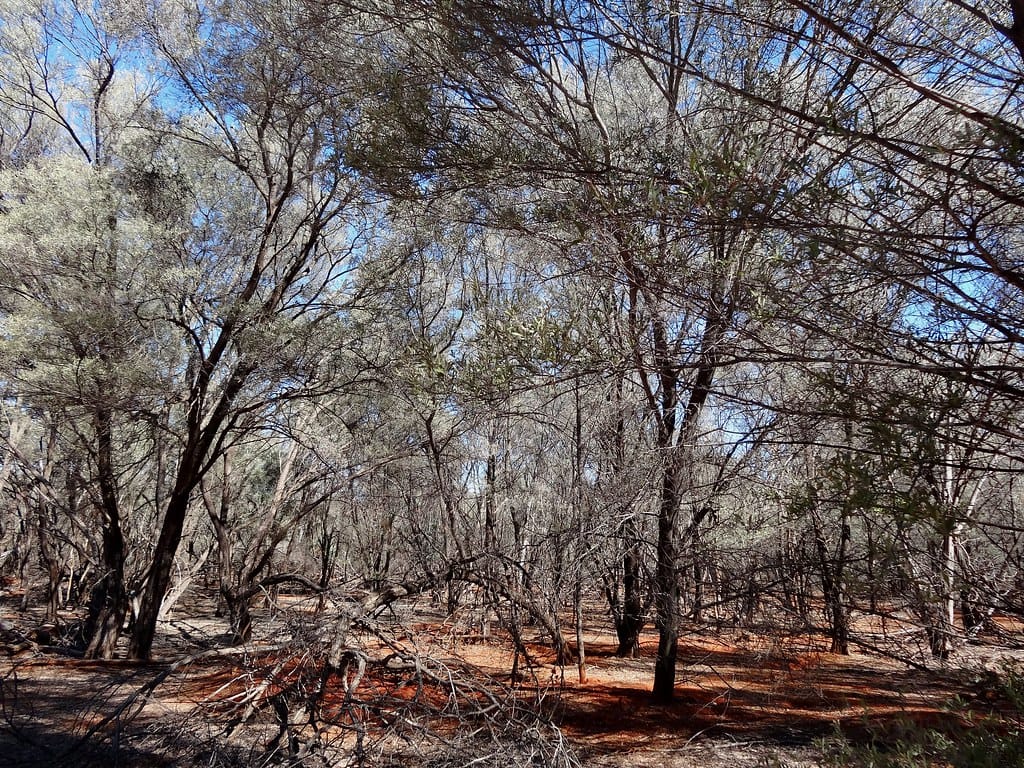You might have searched for “Mulga South Dakota” looking for information about the Australian Mulga plant. While Mulga thrives in arid Australian landscapes, it’s not suited to South Dakota’s climate. However, if you’re looking for tough, drought-resistant plants that will thrive in your South Dakota garden, you’ve come to the right place!
Decoding “Mulga South Dakota”: A Gardener’s Guide to Drought-Resistant Plants
The search term “Mulga South Dakota” likely stems from a misunderstanding. Mulga trees (Acacia aneura and related species) are iconic symbols of the Australian outback, not the Great Plains of South Dakota. These hardy trees and shrubs flourish in the arid and semi-arid regions of Australia, forming woodlands and open forests that provide vital habitat and forage. Their deep root systems and drought-tolerant foliage are perfectly adapted to harsh conditions. Mulga even plays a role in Australian culture, appearing in slang (“out in the Mulga” meaning in remote areas) and classic literature like Banjo Paterson’s “Mulga Bill’s Bicycle.” So, while the “Mulga South Dakota” search might be based on a misconception—perhaps a website error, misremembered information, or even intentional keyword stuffing—it offers an opportunity to learn about both Mulga and the fascinating world of drought-resistant gardening in South Dakota.
Understanding Drought Tolerance and Xeriscaping
Before we dive into South Dakota-friendly plants, let’s define a few key terms. “Drought tolerance” describes a plant’s ability to withstand periods of dryness. These plants are the camels of the garden world, efficiently using and storing water. “Xeriscaping,” on the other hand, is the art of designing a landscape that minimizes water needs. Imagine a vibrant garden that sips water rather than guzzling it – that’s xeriscaping!
Trees: Majestic and Drought-Tolerant
Bur Oak (Quercus macrocarpa): A true South Dakota native, the Bur Oak exemplifies resilience. While a slow grower, it offers longevity, drought tolerance, and even withstands occasional flooding. Imagine its grand, spreading canopy providing shade for generations to come.
Eastern Redcedar (Juniperus virginiana): This evergreen beauty offers year-round color and remarkable drought tolerance. Its vibrant green foliage adds structure and visual interest to any landscape.
Shrubs: Low-Maintenance Beauties
Leadplant (Amorpha canescens): This native shrub, with its silvery foliage and striking purple flowers, thrives in full sun and dry soil. It’s also a pollinator magnet, attracting butterflies and bees to your garden.
Fernbush (Chamaebatiaria millefolium): Don’t let the delicate, fern-like leaves fool you. Fernbush is remarkably tough, handling dry spells with ease and requiring minimal care.
Flowers: Bursts of Color in Dry Conditions
Purple Coneflower (Echinacea purpurea): A prairie classic, the Purple Coneflower brings vibrant color and pollinator appeal to any garden. It’s incredibly drought-tolerant and easy to grow.
Black-Eyed Susan (Rudbeckia hirta): These cheerful golden daisies are as resilient as they are charming. They tolerate dry conditions and poor soil, providing a carefree burst of sunshine to your landscape.
Xeriscaping in South Dakota: A Practical Guide
Xeriscaping isn’t just about plant selection; it’s about working with your environment. Here are a few key principles:
Soil Amendment
South Dakota soils can range from heavy clay to sandy loam. If your soil is heavy clay, amend it with compost to improve drainage and water retention. This creates a sponge-like texture that holds just the right amount of moisture.
Mulch Magic
Mulch is a xeriscaper’s best friend. It conserves moisture, suppresses weeds, and moderates soil temperature. Options include bark chips, shredded leaves, or even gravel.
Watering Wisely
When you do water, water deeply and less frequently. This encourages plants to develop deep roots, making them more resilient to drought.
Comparing Drought-Tolerant Plants
| Plant | Type | Sun Needs | Water Needs | Key Features |
|---|---|---|---|---|
| Bur Oak | Tree | Full Sun | Low | Longevity, drought and flood tolerant |
| Eastern Redcedar | Tree | Full Sun | Low | Evergreen, columnar or spreading form |
| Leadplant | Shrub | Full Sun | Low | Silvery foliage, purple flowers, attracts pollinators |
| Fernbush | Shrub | Full Sun | Low | Delicate foliage, drought-tolerant |
| Purple Coneflower | Flower | Full Sun | Low | Purple blooms, attracts pollinators |
| Black-Eyed Susan | Flower | Full Sun | Low | Golden blooms, low maintenance |
South Dakota’s Native Heritage
While Mulga trees aren’t part of South Dakota’s landscape, the state’s nine distinct Indian reservations, home to several different tribes (including various Sioux bands), are integral to its identity. Approximately 8.57% of South Dakota’s population (around 68,000 people) identifies as Native American, and the state has the fourth-highest percentage of tribal land in the United States. Pine Ridge Reservation, the seventh-largest in the US, covers a vast 2.1 million acres. Understanding the history and significance of these lands is crucial for appreciating South Dakota’s rich and complex heritage. However, it’s important to acknowledge that publicly available maps may not accurately represent current reservation boundaries, and that significant socioeconomic disparities exist on these lands. Ongoing research continues to illuminate the complexities of tribal sovereignty and land management.
South Dakota’s Motto: “Under God the People Rule”
Reverend Joseph Ward proposed South Dakota’s motto, “Under God the People Rule,” during the 1885 constitutional convention. Embraced by the framers, it was included in both the 1885 and 1889 state constitutions and prominently displayed on the state seal. The motto blends divine authority (“Under God”) with the principle of popular sovereignty (“The People Rule”). Its adoption and continued presence reflect the historical and cultural values that have shaped South Dakota. While some experts believe it reflects the deep faith of the early settlers, others suggest it represents an aspiration for a just and moral society. Regardless of interpretation, the motto remains a topic of ongoing discussion and relevance, particularly within the context of the separation of church and state in modern America.
Discover the hidden gems and rich history of Manlius Township Michigan. Uncover the fascinating details behind Maura Tierney net worth and explore her remarkable career.
- Georgia Platform: A Southern Strategy, 1850s - March 31, 2025
- How many weeks is 40 days: Quick Conversion Guide for Accurate Results - March 31, 2025
- How many feet is 300 meters? 984 Feet: Understand Length Conversions Easily - March 31, 2025
















